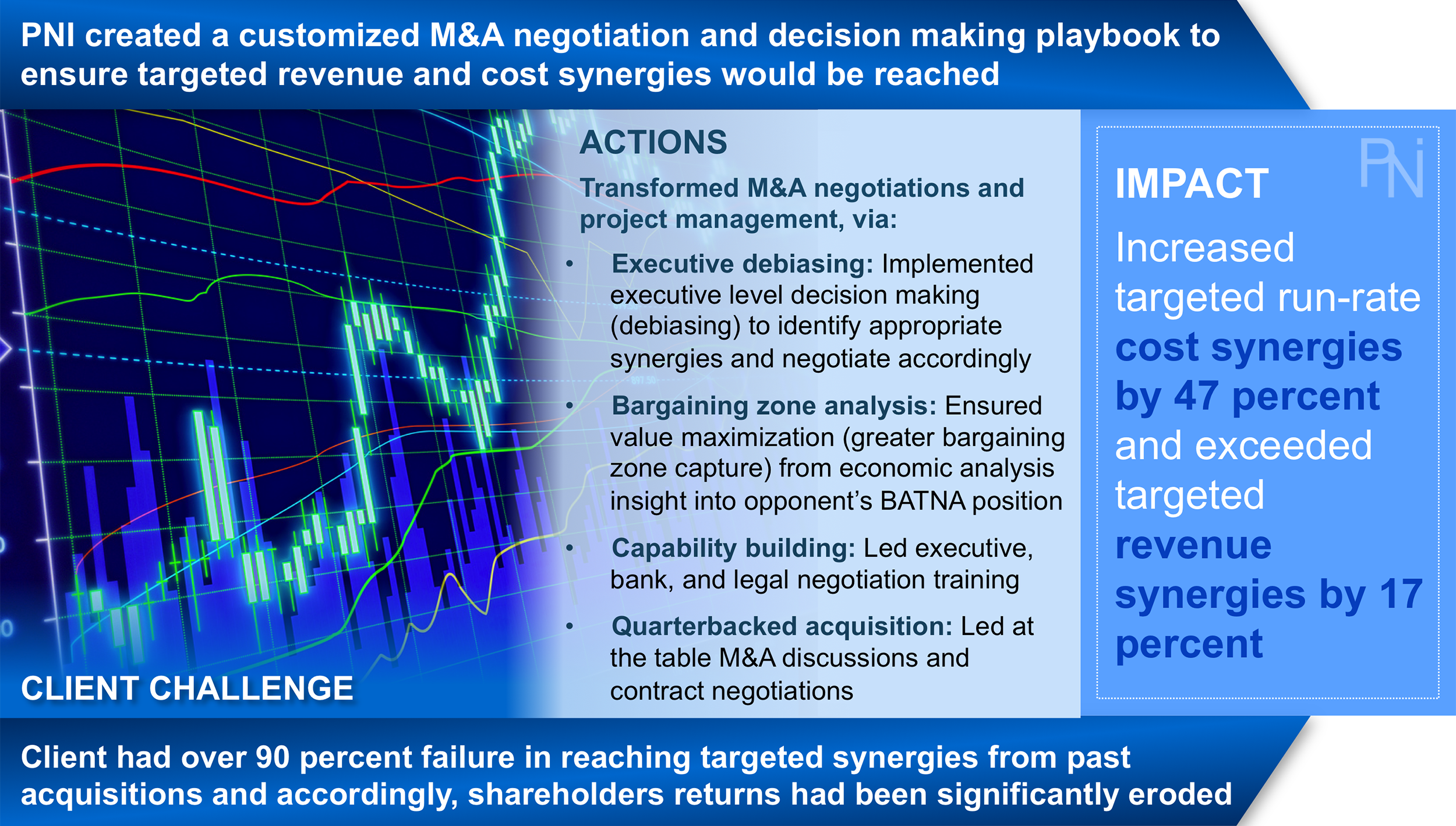Overview
Exhibit 1 (Click to Enlarge)
We help clients significantly increase and sustain their key account margins. What most organizations don’t realize is that key account management (KAM) is an organizational change and not simply a sales technique. We see that key accounts oftentimes represent approximately 50 percent of a corporation’s revenue yet are typically under attack, with most key accounts bringing in 5 to 9 percent lower margins than other customers. By leading key account transformations via proprietary protocols we have helped clients drive 11 to 17 percent growth in revenues and an 8 to 15 percent increase in margins.
KAM often falls short because it is too often transactional rather than strategic, personalized, and solution oriented. Our surveys illustrate that on average over 60 percent of key accounts are dissatisfied with the relationship. In large part, this shift is transpiring because key accounts are becoming significantly more sophisticated and digitally oriented. Simply, there is a large “customer experience gap” between what key accounts expect and what they actually receive, equating to a poor customer experience and significant key account value erosion. We help clients mitigate this erosion by implementing proprietary initiatives, including our (1) 10 best key account management practices, (2) customer experience solutions, (3) sales turnarounds, (4) employee engagement and capability optimizations, and (5) digital transformations, ensuring top-quartile performance across key accounts (See Exhibits 1-7). In so doing, clients unlock significant customer value while significantly improving the key account relationship and long-term viability. See Section #2 for a detailed breakdown of our key account transformation frameworks. Finally, see Section #3 for a detailed breakdown of our 10 key account management best practices that we implement during our transformation engagements.
Our Approach
Transformation Approach & Frameworks
PNI has a proven track record of rapid impact in key account management. We help our clients transition from being a key account “transactional” provider to instead being a key account “solution” provider that unlocks value for both sides. Quite simply, we help clients transform their key account management capabilities by mitigating key account customer journey pain points and ensuring an optimal customer experience, ultimately driving greater margins, loyalty, and overall growth. We do this by taking our clients through a six step process (See Exhibits 2-7), specifically, (1) implementing key account management best practices, (2) optimizing the customer experience, (3) transforming key account sales, (4) creating digital capabilities, (5) optimizing key account decision-making, and (6) implementing a key account negotiation transformation. Together, these six steps not only foster long-term partnerships but also unlock significant profits for both sides, ensuring key accounts are no longer margin deficient but margin healthy. See below for an overview of each step.
Transformation Overview
- 6 Phase Journey -
1. Key Account Best Practices
2. Customer Experience
3. Sales Transformation
Exhibit 2 (Click to Enlarge)
We implement our 10 key account best practices in helping our clients create a holistic, value maximizing key account capability engine that in turn drives sustainable top and bottom line growth across the enterprise (See Exhibit 2).
Exhibit 3 (Click to Enlarge)
We take a holistic approach to our customer experience transformations by implementing our proprietary nine-step customer experience journey framework coupled with our trademarked "customer experience quadrant™" (See Exhibit 3).
Exhibit 4 (Click to Enlarge)
We leverage our proprietary and holistic sales transformation model, helping our clients overcome any organizational sales gap and customer pain points that may be negatively impacting key account revenues and relationships (See Exhibit 4).
4. Digital Transformation
5. Decision-Making Turnaround
6. Negotiation Optimization
Exhibit 5 (Click to Enlarge)
We implement our proprietary digital transformation roadmap as key accounts are becoming increasingly demanding and digitally savvy, expecting a seamless "omni-channel" like experience that only digital can provide (See Exhibit 5).
Exhibit 6 (Click to Enlarge)
We leverage our 6-step key account decision-making framework, creating behavioral science and decision-making levers that optimize key account outcomes and ensure value added versus value erosive decisions (See Exhibit 6).
Exhibit 7 (Click to Enlarge)
We implement optimized key account negotiation protocols and capability building that (1) maximizes the bargaining zone, (2) ensures collaborative discussions, and (3) drives Pareto optimal outcomes (See Exhibit 7).
KAM 10 Best Practices
10 Best Practices
- Key Account Management -
Best Practice 1
- Become a Solution Provider -
Transition from a transactional approach to a solution provider mentality via (1) developing a mindset of making the customer successful by building a deep understanding of their needs, goals, KPIs, and metrics for success, and (2) creating pull via customizing the product and/or services to the end consumer.
Best Practice 2
- Understand Account Economics -
Understand account economics by performing an enterprise needs assessment, including (1) drivers of profitability, (2) customer total cost of ownership (TCO), (3) 100 percent share of wallet breakdown, and (4) key decision-maker and influencer analyses (from the top-down).
Best Practice 3
- Conduct Consistent Account Reviews -
Conduct regular account reviews based on short-term performance and long-term health of key accounts, ensuring each is receiving “best practice” treatment as well as optimum time of coverage based on account size, economic potential, market shifts, and account complexity.
Best Practice 4
- Seize Moments of Truth -
Seize “moments of truth” with each key account to build stronger relationships via (1) understanding the varying inflection points a customer may experience, (2) offering customized support and solutions, and (3) offering predictive insights that will drive a solution versus transactional only approach.
Best Practice 5
- Codify Learnings & Performance Results -
Codify experiences and lessons learned by creating and institutionalizing enterprise wide memory, including a win-loss team and robust loss bid analysis. Ensure appropriate dissemination of learnings and insights to both the key account functional leaders and broader organization.
Best Practice 6
- Reallocate Sales Coverage -
Reallocate inside and outside sales to better align with the changing needs of digitally savvy customers, who have a preference for speed, convenience, and on the spot support. Bolster sales ops, ensuring they account for 50-60 percent of the total sales team, allowing for improved personalization, sales toolkits, and insights.
Best Practice 7
- Form Cross-Functional Account Teams -
Create cross-functional key account teams for driving the most holistic, personalized support. This includes functions not typically associated with key account coverage. Finally, create an enterprise scorecard (KPI’s) to drive key account enterprise alignment via focused company wide incentives.
Best Practice 8
- Improve Negotiation Capabilities -
Improve negotiation and decision-making capabilities while also strategically building in switching costs. Gaps in key account negotiations and thus poor decision-making can be highly erosive as the pressure to succumb to large key account demands can equate to significant money left on the negotiating table.
Best Practice 9
- Improve Employee Engagement -
Improve employee engagement as customer engagement is highly correlated to employee engagement. Simply, the key to loyal, engaged customers is first to create loyal, engaged employees that are then inspired to drive service excellence and "wow" experiences for customers.
Best Practice 10
- Drive Personalization at a Segment of 1:1 -
Personalize key account experiences and segment at a level of one as key accounts expect personalized, predictive solutions that help them solve their most pressing problems. Simply, the strategic focus should never be at a broad or even segmented level but rather at an individual program level to maximize NPV.
Examples of Our Work
Client Results
We have helped clients significantly increase their key account revenue and margins while simultaneously improving key account long-term relationships. Examples of our work include:
Exhibit 8 (Click to Enlarge)
- EXAMPLE #1 (See Exhibit 8): Increased margins by 8 percentage points, improved overall annual revenues by 19 percent, and enhanced account penetration and retention by: (1) optimizing the customer experience and journey, (2) implementing our 10 key account best practices, (3) creating customized negotiation, decision-making, and contracting playbooks that optimized value for both sides, and (4) enhancing enterprise digital capabilities for optimized sales and key account journey touch points.
Exhibit 9 (Click to Enlarge)
- EXAMPLE #2 (See Exhibit 9): Increased key account revenues by 21 percent, lowered the cost to serve by 12 percent, and ensured more efficient allocation of resources by (1) implementing key account best practices, (2) optimizing the sales journey (including reallocation of inside/outside sales and sales ops), (3) enhancing the customer experience, and (4) customizing negotiation and decision-making key account protocols.
- EXAMPLE #3: Unlocked $375 million in profits by enhancing the customer experience via: (1) key account diagnostics and 10 best practices implementation, (2) customized key account decision-making and negotiation playbooks, (3) internal trainings via train-the-trainer and war room creation, (4) value optimizing contract protocols for each key account, and (5) digital transformation across the sales function.
SEE BELOW FOR ADDITIONAL RESULTS OR CLICK HERE
Additional Client Results
Additional Transformation Services
Our customer experience work ensures top customer engagement/loyalty, top quartile net promoter scores, and a pain-point free customer journey, equating to 12 percent and greater revenue increases
Our digital transformation engagements drive significant growth, innovation, and organizational success ensuring distinctive (1) employee empowerment, (2) product differentiation & (3) customer experience
Our M&A and PE engagements optimize purchase price while ensuring target synergies are fully reached, resulting in 28 to 77 percent higher RTSR and ~37 percent increase in deal closings
Our sales transformations includes key negotiation and behavioral science levers, allowing our clients to experience revenue improvements of 12 to 33 percent and margin increases from 6 to 17 percent
Our procurement and supply chain transformations help clients achieve sustainable cost savings from 16 to 63 percent typically followed by additional cost savings of 2 to 4 percent annually
Our contract transformations increase profits up to 31 percent, improve the likelihood of reaching an agreement by ~95 percent, and increase chances of Pareto efficiency by ~139 percent























































































